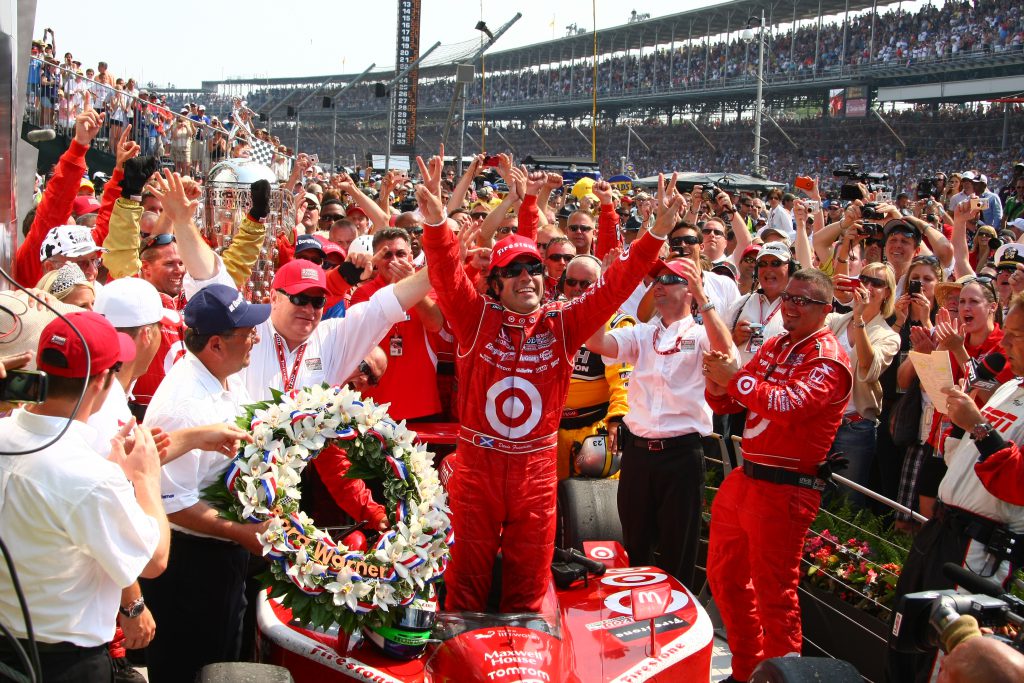During Chip Ganassi Racing’s 30th anniversary season in 2020, The Race spoke to Dario Franchitti about being the last driver to win the Indianapolis 500 and the IndyCar title in the same season.
In 2005, ’06, ’07, ’08 and 2010, the Indianapolis 500 and IndyCar championship were won by the same driver. Little did Dario Franchitti know in 2010, that this was a golden period, and the feat hasn’t been repeated in the following nine years since.
Franchitti was at the height of his powers at this point. He’d delivered his first Indianapolis/IndyCar double in 2007, taking the 500 after 166 laps due to a rain delay and the championship by 13 points over Scott Dixon.
Having achieved that with Andretti Green Racing, Franchitti made an un-fruitful switch to NASCAR, but returned to IndyCar for 2009 – where he promptly refused to accept anything had changed and again beat Dixon to the title, this time as his Chip Ganassi Racing team-mate.
With the title won on his return, you’d think there would be little change for the team ahead of the 2010 season, and you’d be right – “I don’t think we even changed a mechanic”, says Franchitti – but “marginal gains” was the goal.
It looked like Franchitti and the Ganassi team would struggle to defend the IndyCar crown, however, as after the first five races he was fifth in the championship and 38 points behind early leader Will Power. The latter used 2010 to really establish himself in a first full year at Penske and looked set to emerge a champion.
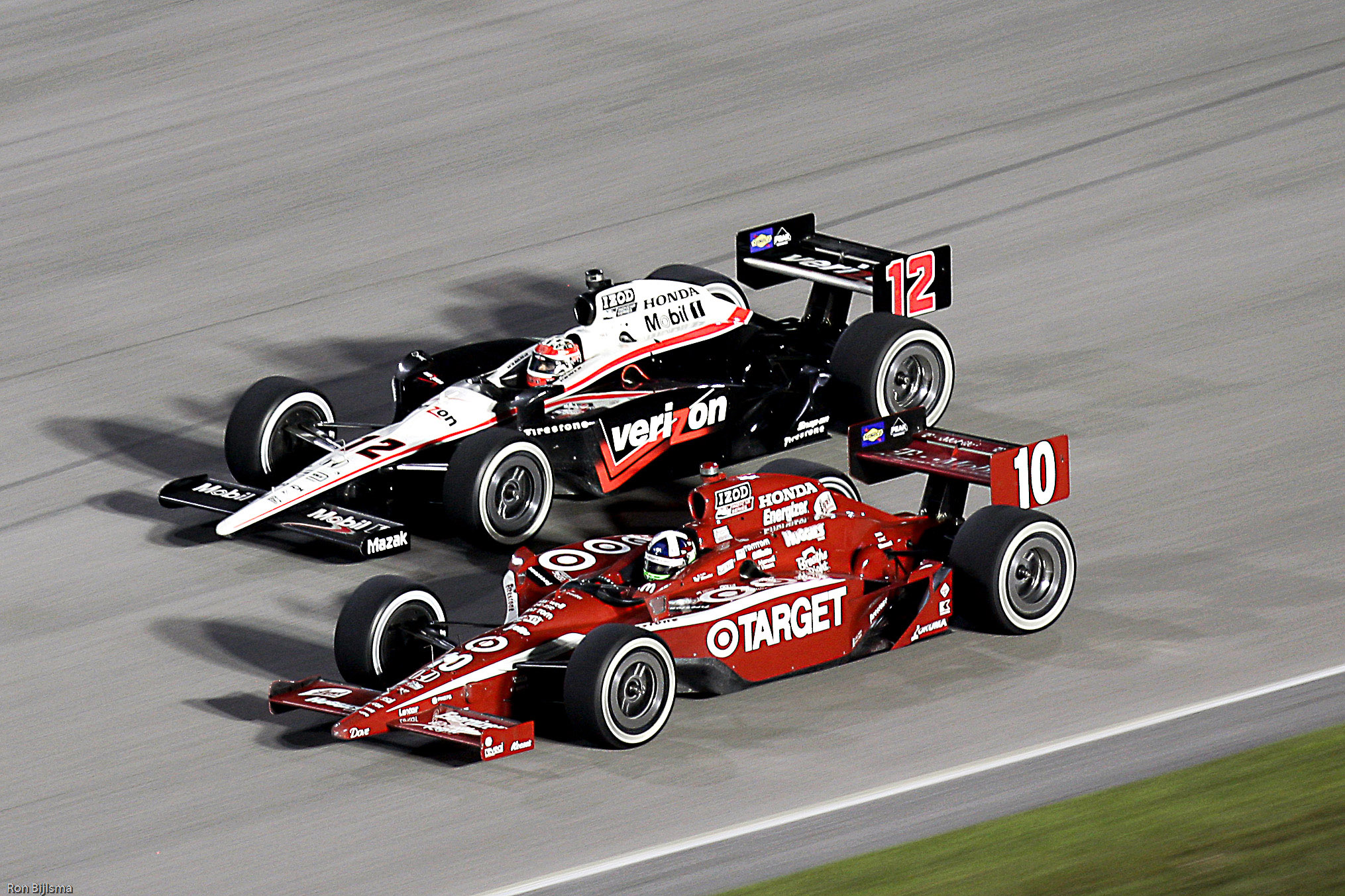
With the sixth event of the season being Indy, Franchitti doesn’t remember being particularly worried about the championship situation. The deficit was down to Power winning the first two races, while Franchitti cut a consistent but blockbuster-lacking run together with a pair of podiums the highlights.
Franchitti qualified third for the 500, a place behind Power. But Franchitti knew, the minute the chequered flag dropped, that he had the car to beat. It was in part thanks to some sterling work done in the build-up, Chris Simmons engineering the 10 car to what was pretty much a perfect set-up for the event.
“That car we showed up with in 2010 was just quick,” recalls Franchitti in an exclusive interview with The Race. “We don’t know why and if we did we would have replicated it every year! But it was just mighty.
“I was in a very fortunate position with Ganassi because I went to Indy in ’09, ’10, ’11, ’12 and ’13, ’13 was the only time we didn’t have a car capable of winning the race. I’m not talking about being in contention, I’m talking about proper race-winning cars. That was a wonderful position to be in.
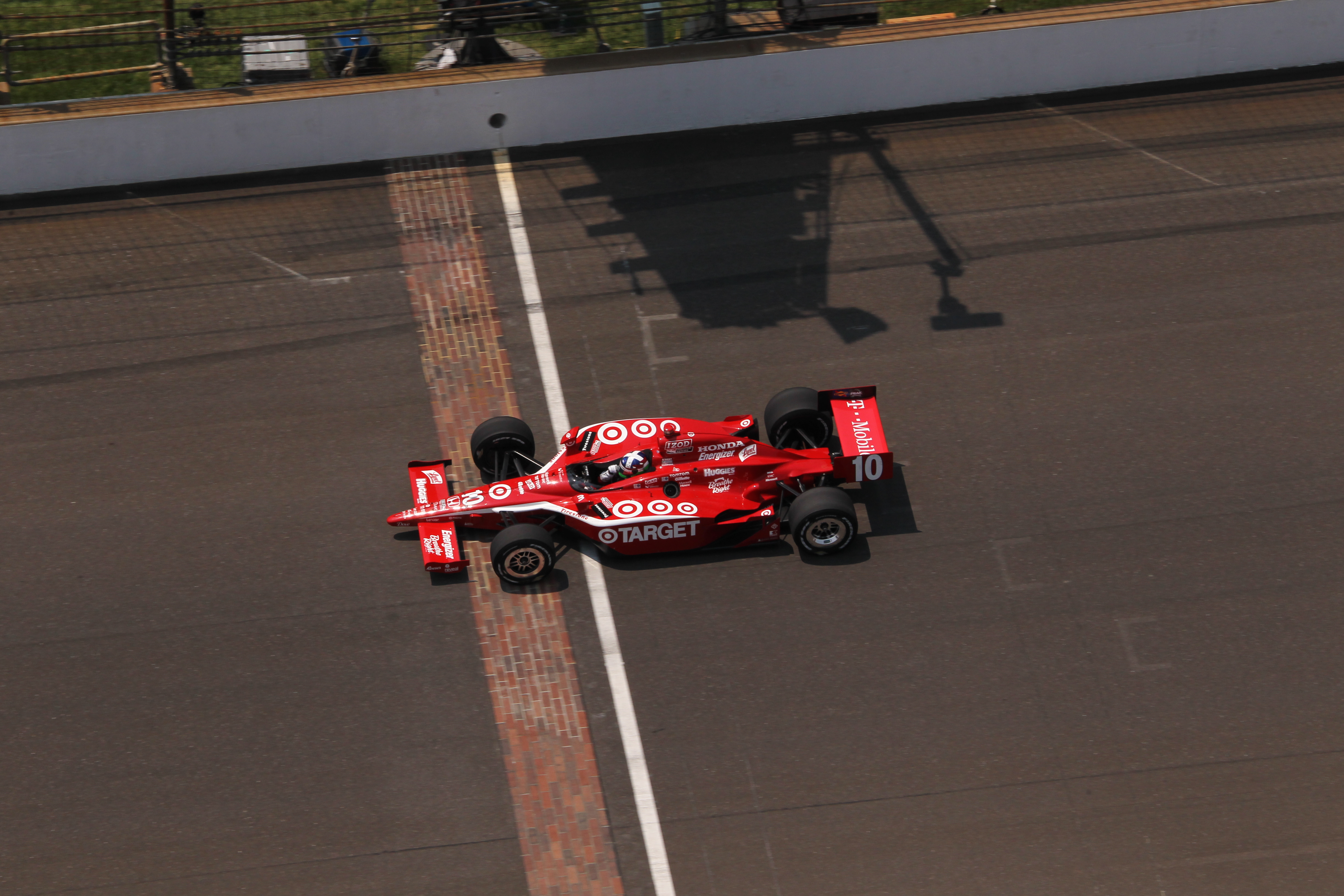
“The 2010 car was just mighty. We had a good set-up, it wasn’t an easy thing to drive, but it was fantastic in traffic, it was really quick on its own, at one point I think we had half a lap on the field.”
Franchitti led for the first 31 laps before Power took over, although Franchitti didn’t put up much of a fight in those early stages. However, it wasn’t long before his rivals started to hit trouble.
Power exited with the fuel hose still connected after an early stop, while Dixon and frontrunner Raphael Matos both left their pit boxes with loose wheels in the same round of stops! Matos lost his left rear and immediately spun, while Dixon lasted two pit boxes before drawing to a halt, his wheel conveniently rolling into Ganassi’s pit where it greeted Franchitti’s mechanics as if the tyre were a metaphor for the pendulum of the race swinging in Franchitti’s favour.
Matos promptly crashed (below) when racing resumed, while three-time and reigning Indy 500 winner Helio Castroneves stalled in his Penske pit box. All this left Franchitti in a confident position.
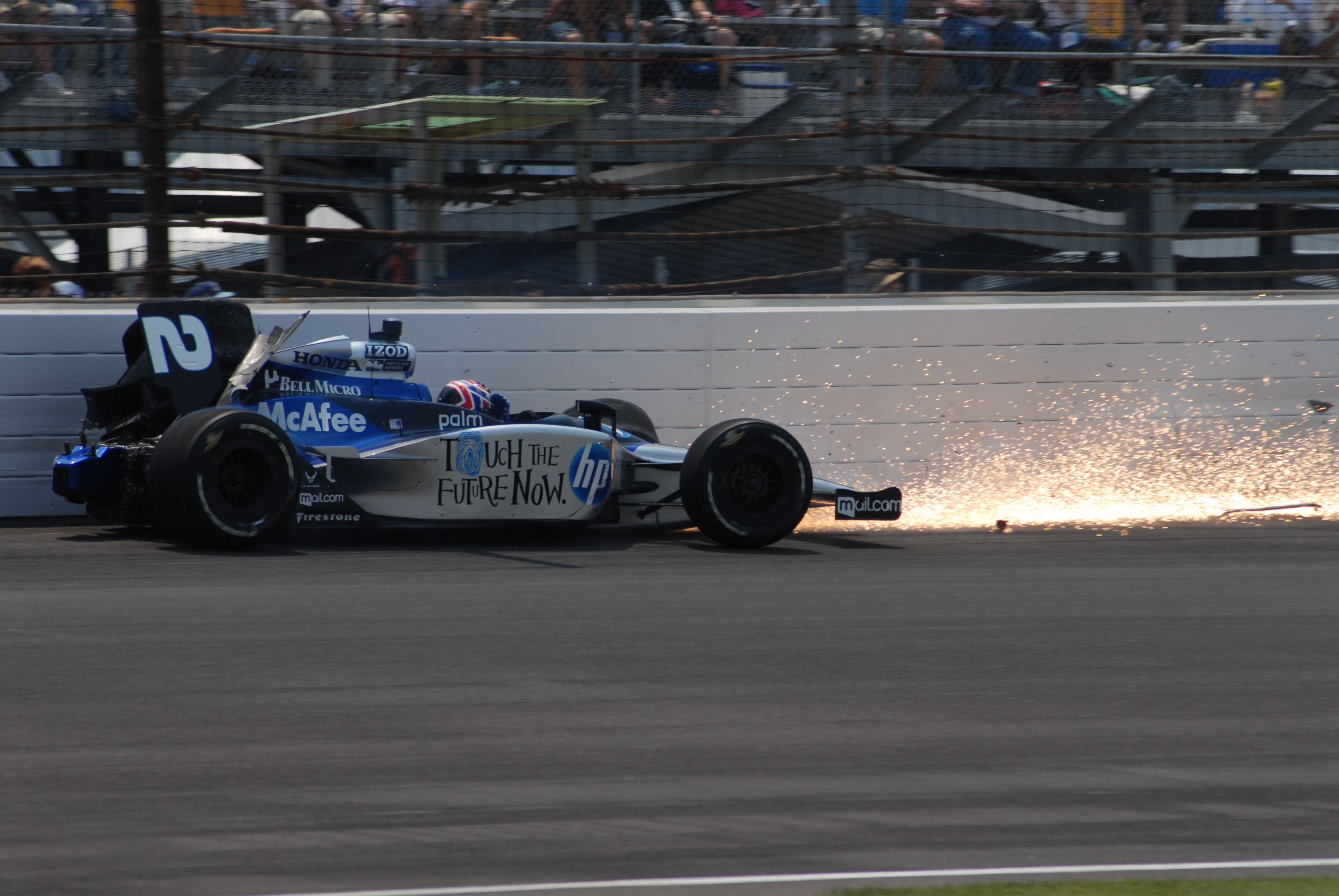
“I bounced it off the wall in Turn 1 just getting a bit too close, which was a wake-up call, I do remember that,” Franchitti adds. “I remember driving along – I remember clearly – going between Turns 3 and 4, and I thought ‘this is too easy’. It’s never this easy.
“Everything was running perfectly and I was just looking out for the cartoon anvil [iron block made famous by Warner Brothers] to fall on me. And it was that last caution, it was lap 161 which made it a massive fuel race and we didn’t want that, we had the pace to win.”
But as the laps ticked down, more and more drivers pitted – having stayed out on lap 161, when Franchitti had made his stop. Mike Conway, Justin Wilson, Castroneves and then finally Tony Kanaan all stopped to hand Franchitti the lead. Kanaan started 33rd and last and had been epic to scythe through the field. But as much as the strategy had played his way to aid his run, it took away as he ran dry and gave up another year of Indy success.
That made it a battle between two of the best drivers of the era for the win, Franchitti and Dan Wheldon, on the same strategy. Franchitti remembers the only time he lost his temper at his spotter Scott Harner, as he wanted the gap to Wheldon not in seconds but when he crossed the finish line! The Scot credits then-strategist Barry Wanser for telling Franchitti immediately after the earlier caution that he’d need to save fuel, which paid off.

If Wheldon zoomed in, Franchitti eked the margin back out in what he calls a “cat and mouse” game. But ultimately Franchitti reckons he had enough fuel to win – just – without the late caution.
It was the only sour note of the day for Franchitti, as he had to tour by one of the biggest accidents in Indy memory, in which Ryan Hunter-Reay was flipped into the catch-fencing after colliding with Conway (pictured below). Hunter-Reay had run out of fuel and Conway was unable to avoid him, breaking his lower left leg which – luckily – he was able to recover from.
Able to enjoy and reflect on the result now, Franchitti reckons – although it hasn’t happened since – that winning the 500 was such a powerful tool in firing up both driver and team to succeed in a championship push.
“It seemed to me, winning Indy would set you up for winning the championship,” he says. “Because it’s such a confidence-booster for the whole team. It really got the momentum running throughout the summer, one after the other after the other.
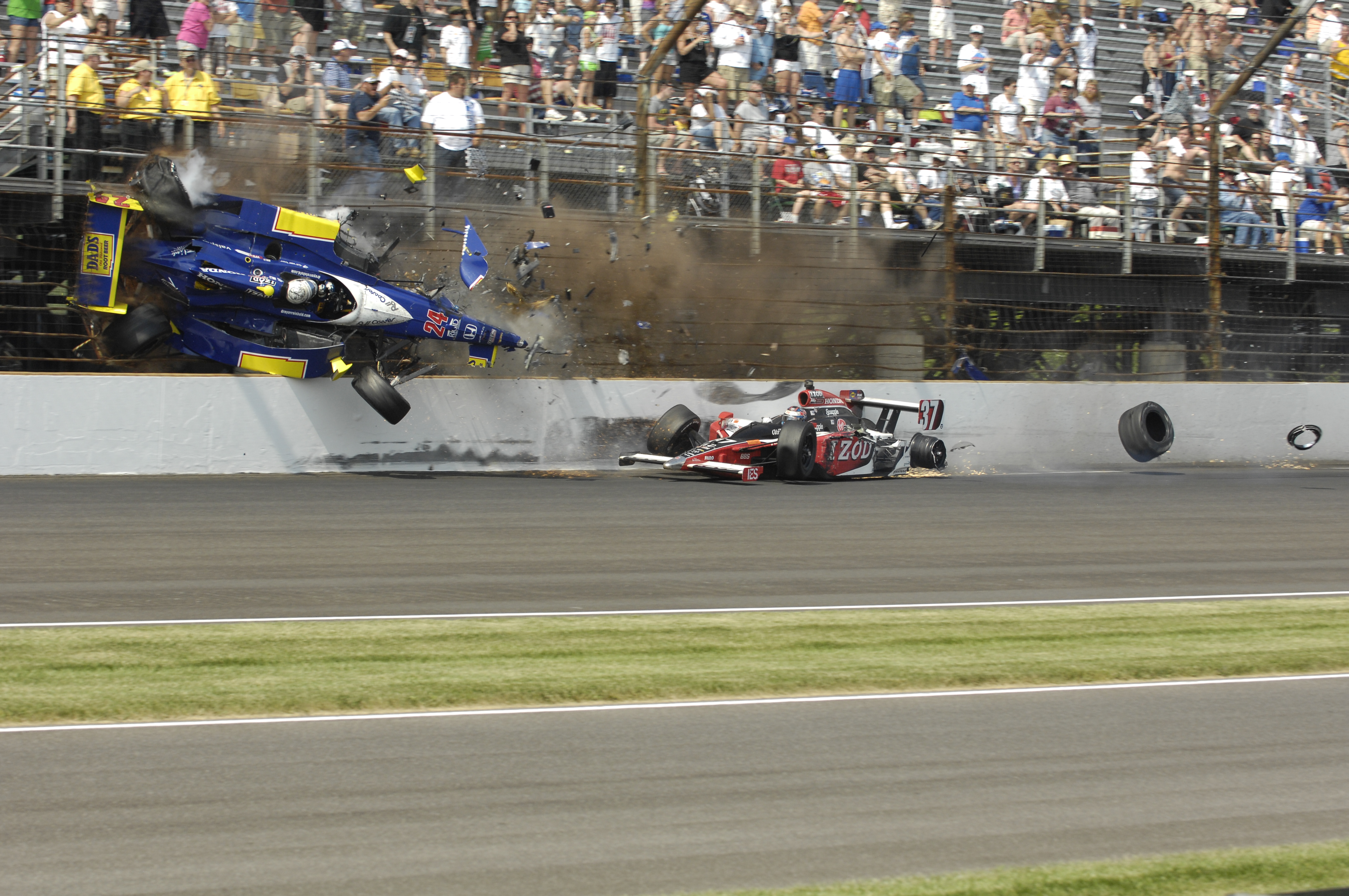
“I didn’t think anything about it at the time.
“It was a massive high afterwards, and then you go in the whirlwind of all the media that comes with it and then you have to get back down to earth for Texas the following week. That was the challenge.
“It was amazing to win the 500 and then get on with the battle for the championship with that in the back pocket.”
Moving on, Franchitti was fifth at Texas and then a gearbox broke while leading at Iowa, but after that the momentum from the 500 really kicked in. He did not finish outside of the top eight for the nine remaining races of the season, including five podiums and another two wins added.
Power also added three wins to the two he’d scored before the 500, but three finishes outside of the top 10 really hurt the Australian, including 25th in the season finale at Homestead.
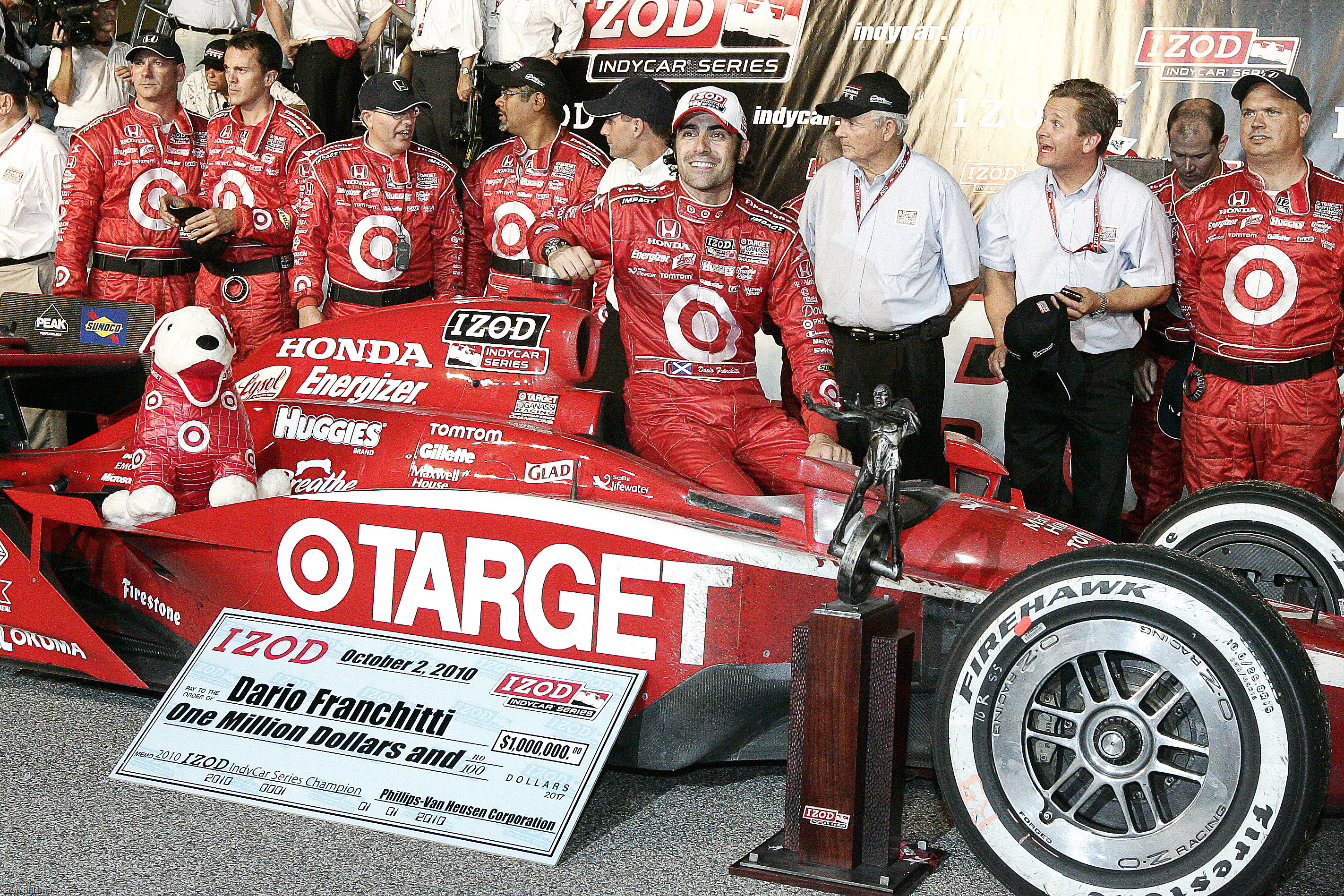
That came thanks to a crash while trying to lap Hunter-Reay, in a disappointing end to a season that had really announced Power onto the scene as a title contender. Franchitti led the most laps in the race but scaled back once Power was out of the equation.
It was a taxing run-in for Franchitti, at this point fighting a younger driver hungry to prove himself while Franchitti sat at the very top of the IndyCar pedestal. Motivation was something he and the team needed to work on.
“Scott and I had finished 1-2 in the championship in 2009, we were both in contention at Indy,” says Franchitti. “But we knew that we couldn’t stand still so we pushed over the winter and I pushed myself as well to be fitter. I was getting on a bit then, mid to late 30s, so I was just having to work harder to stay ahead of the kids.
“There was no need for revolution, just tidying up a few of the mistakes I had made the year before. Just the consistency. I knew Scott was going to be difficult to deal with as he always was and as he has proved to be since.
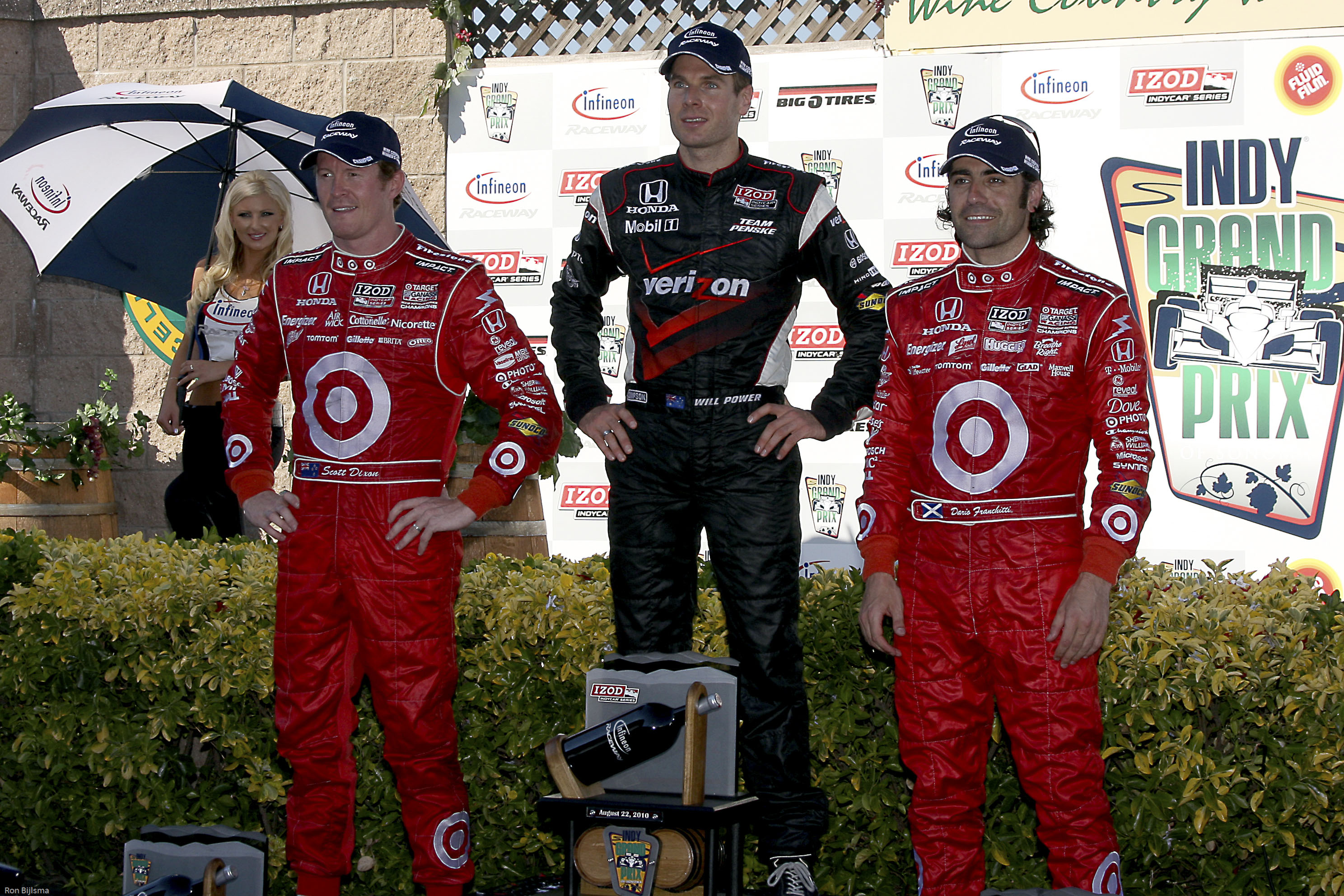
“I think the years that we were team-mates, I think they’ve aged quite well when you look at what he’s done since!
“The hardest thing for us as a group – I mean the 10 car at this point – was to keep that motivation going to win the championship, and then again the following year at the last round [in 2010]. That was hard. Because, you can become complacent and we didn’t, luckily. And I certainly didn’t. I knew my time was running out because of my age. I was surrounded by a group of people on the team that felt the same way. They were as hungry still as I was.
“Obviously Power came in and was starting to become more consistent with his undoubted speed. So that made things quite interesting through the season and we had a few run-ins.”
It capped off what was an incredible season for Ganassi, and not just in IndyCar.
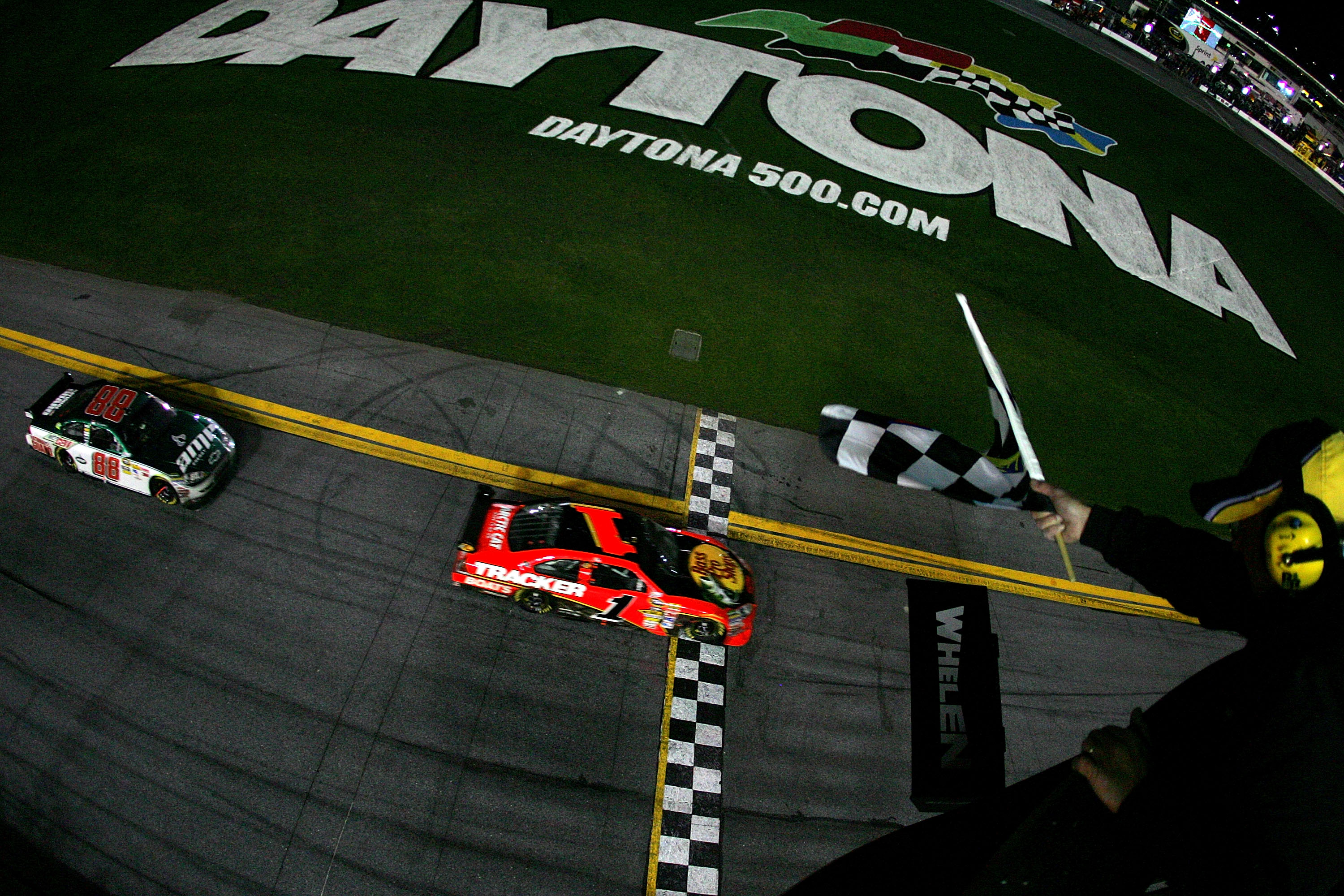
At the start of the year, its NASCAR team – which had never really reached elite status – won the Daytona 500 with Jamie McMurray. Not long after, Juan Pablo Montoya took pole and led the most laps at the Brickyard 400, an extremely prestigious event held on Indianapolis’s oval configuration like the 500. McMurray would go on to win the race, and with the Indy 500 and the IndyCar title to boot, it marks one of the most successful team years in American motorsports history. Especially for a team that isn’t Penske.
In fact, Penske came close to the same feat when it won at Daytona with Joey Logano and the 500 with Montoya in 2015, but Dixon came through for Ganassi to win the IndyCar title and foil Penske’s efforts at the hat-trick.
Back in 2010, for the first time ever the same team owner was able to take the famous Monday winners pictures at the Indy 500 with the Daytona 500 trophy too, the ultimate honour as Franchitti and McMurray posed together with Chip Ganassi (below) to mark a momentous occasion.
Ganassi’s managing director Mike Hull recalls the season and the feeling in the team with all of those successes at once.
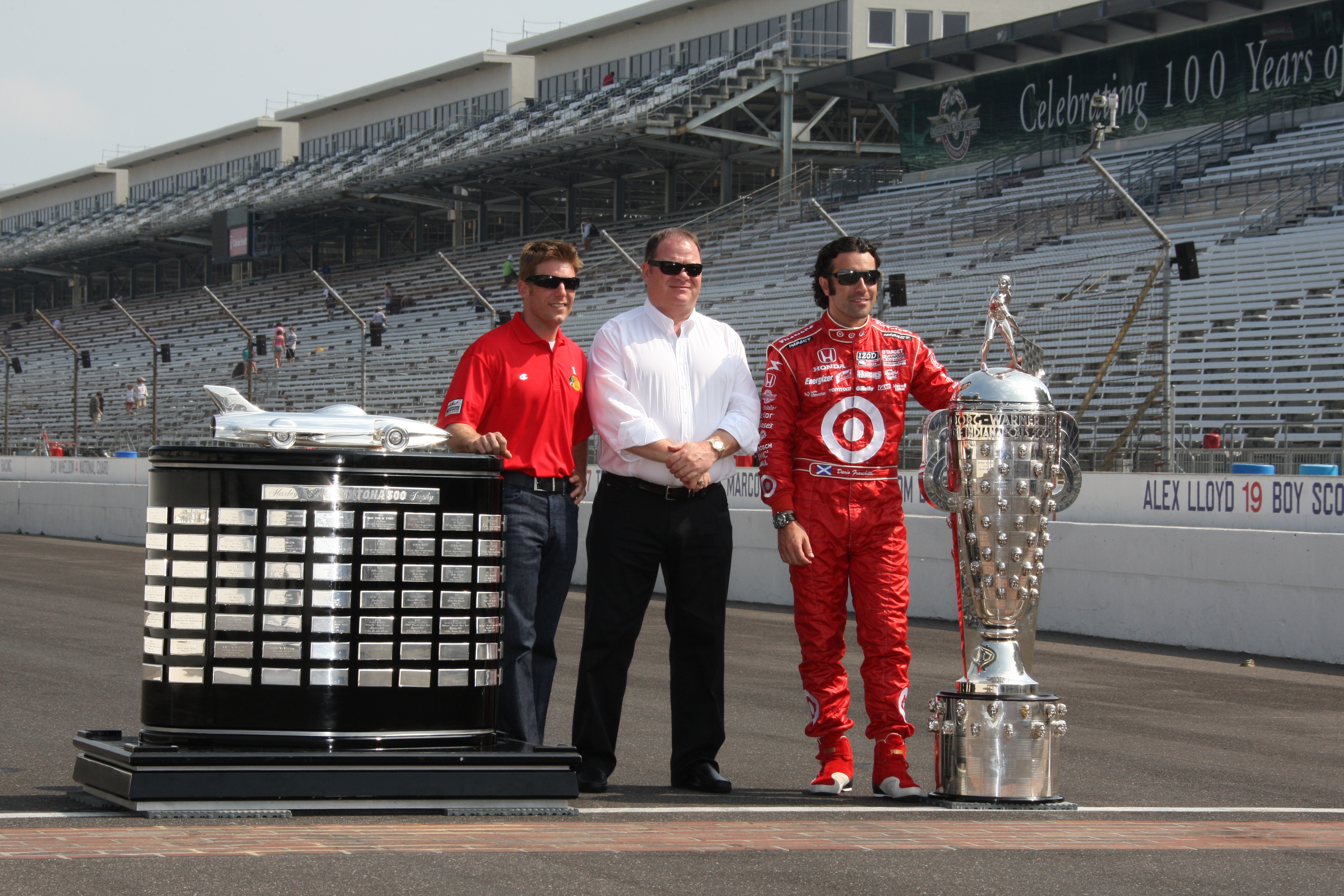
“Well the thing is you try to win the race – and we’ve been lucky, we won a lot of races,” Hull tells The Race. “To win the big races like what you’re talking about, in that amount of time, is significant, extraordinary.
“It’s like putting your finger in a socket!
“It provides so much energy for team-mates, the team members, the organisation. People say that it validates what you do but it’s a lot more than that. It’s a very special time.
“I’ve always been lucky enough to work for Chip, been involved in times like that. But I think all of us what we do is, we realise that those things are benchmarks to what we can accomplish next. We’ve always looked at it like that and we’ve always really worked hard on what’s coming in front of us, not what happened behind us.
“Then what happens is we’ll be doing an interview with folks like you and it puts it all in perspective. It’s really gratifying.”
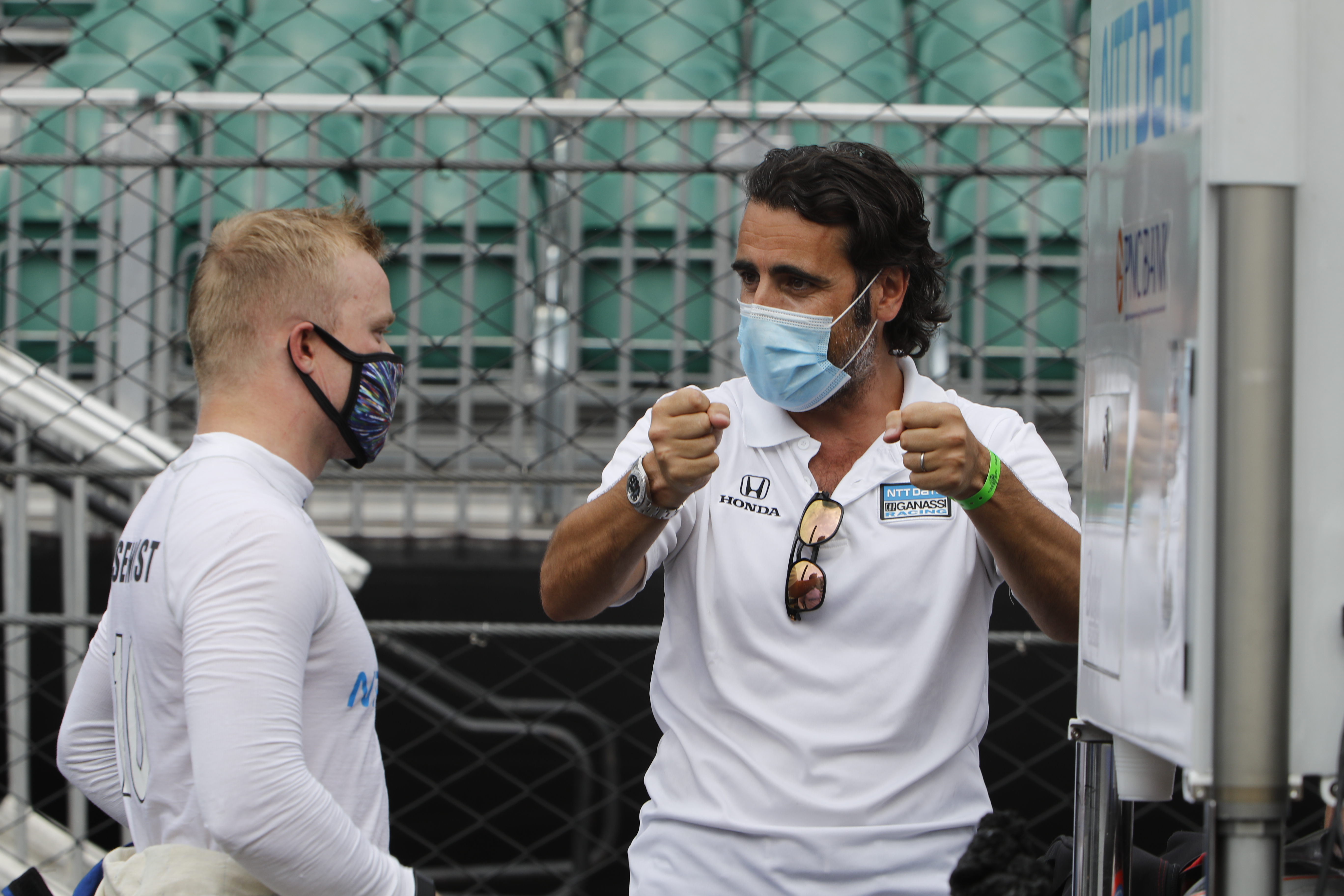
Hull has worked for Ganassi longer than we’re willing to commit to paper in the worry that we might offend him, and has worked with every incredible driver that walks through the door of the factory.
Franchitti is still with the team as ‘team advisor and driver coach’, and Dixon has spent all of his IndyCar years from 2004 with the team.
However, Hull believes that, since Franchitti left and then quickly returned to the team following the end of his racing career, perhaps his talent has become even more obvious to Hull.
“What made Dario as successful as he was as a driver, he was a student of driving a race car,” adds Hull. “And he took a corner apart better probably than anybody that I’ve ever personally been around. The corner, wasn’t one corner, it didn’t have an apex, it had 100 apexes.
“The year after Dario stopped racing, and he started working for us as a driver coach, he walked around one of the circuits with Scott Dixon on a Thursday afternoon. Dixon came back and said ‘now I really understand what Dario did in a complex of corners. But I don’t think I can do that. Because if I do, I think I’m gonna crash’.
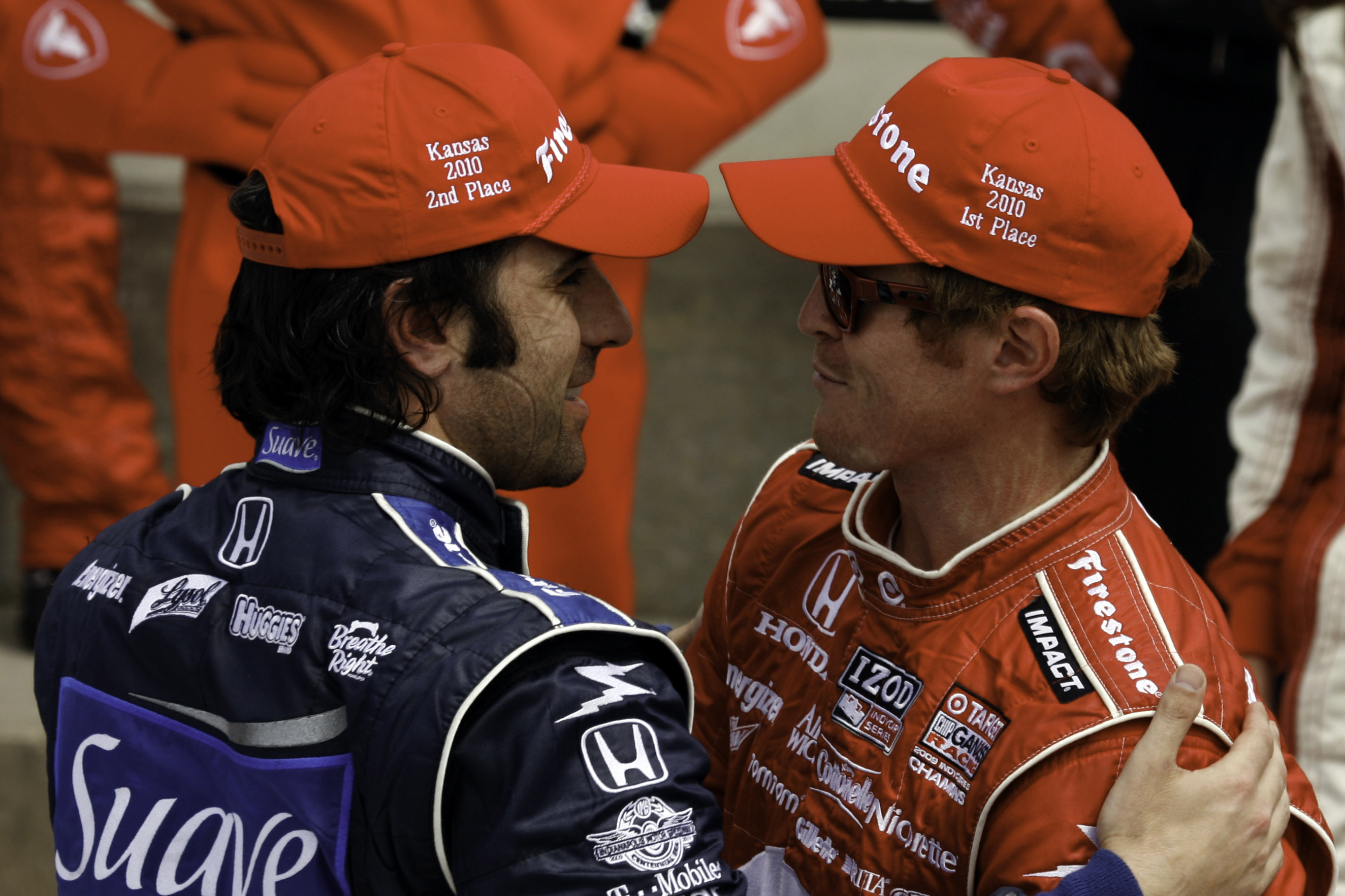
“He talked to me about it and I said ‘well, we have a spare car! Maybe you should sneak up on it and see if it works’.
“And he was on pole!
“He used a lot of what Dario had been telling him all along that he wasn’t willing to try. And it wasn’t things that Dario was holding back. So, you know, I think Dario understood traction extremely well. He understood how to create exit speed. He had a thick file folder for every time he’d ever been at that racetrack. He took meticulous notes. And he reviewed those notes and he studied those notes.
“Every morning the next day it was like the final exam to be able to graduate. Some drivers just don’t do that, they keep everything buried in their heads. Dario wrote everything down and was really a student of the game. Totally dedicated to being a professional. But not only what he did, but how accomplished he became.”
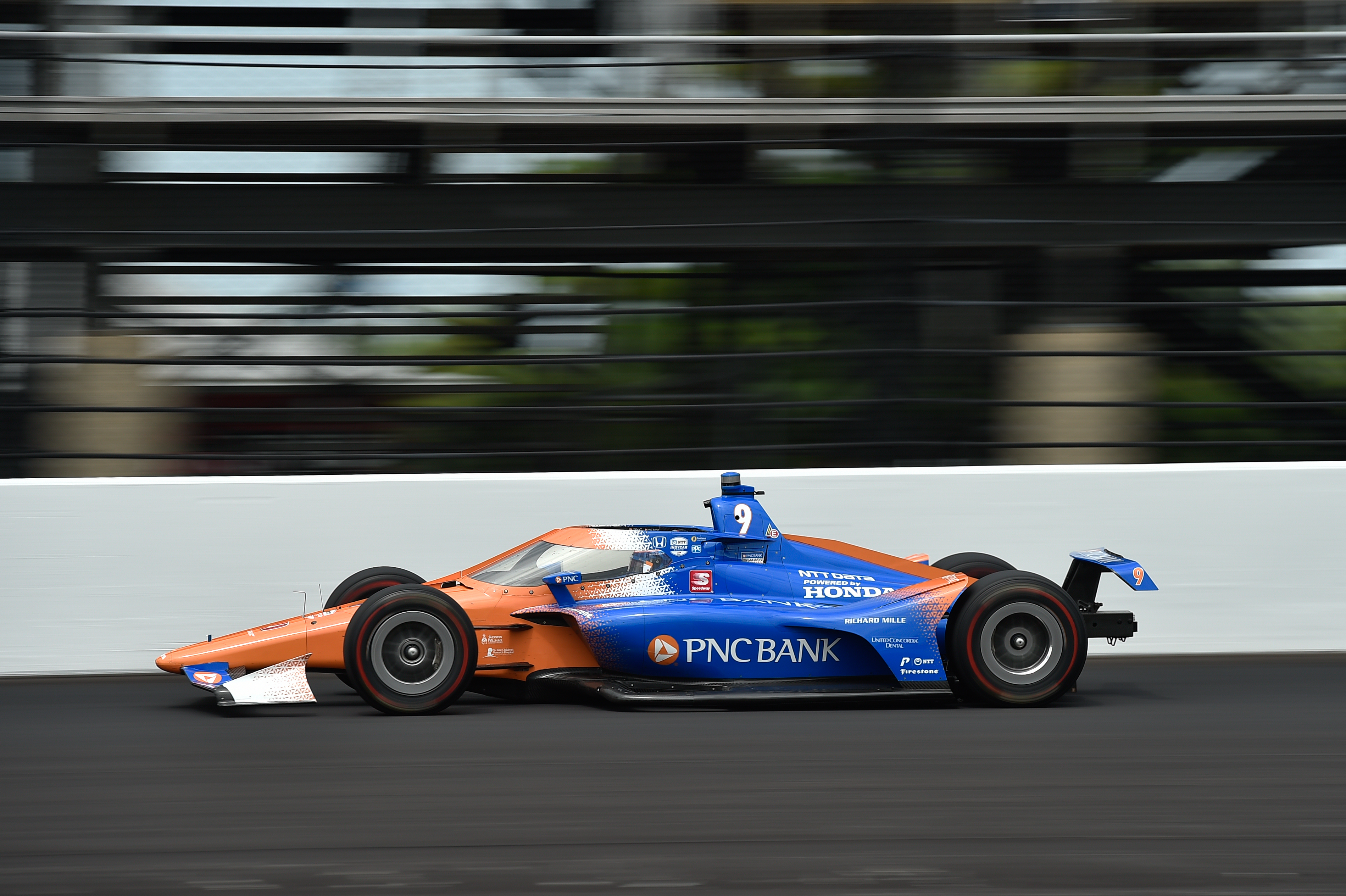
And something Franchitti said earlier is right. His years with Dixon can be looked on in an even more positive light owing to Dixon becoming a five-time champion, and due to Hull’s story, that a 40-year-old Dixon is still learning from Franchitti.
The coincidence being, that if anyone is in the position to end the drought and rob Franchitti of the record of being the last person to win the 500 and the IndyCar title in the same season, it’s Dixon. And as driver coach, Franchitti would be part of that success!
When asked by The Race about Dario’s input now, Dixon said: “It’s just attention to detail and that’s how and why Dario was so successful in competition and was definitely one of the toughest people that I have ever had to try and beat.
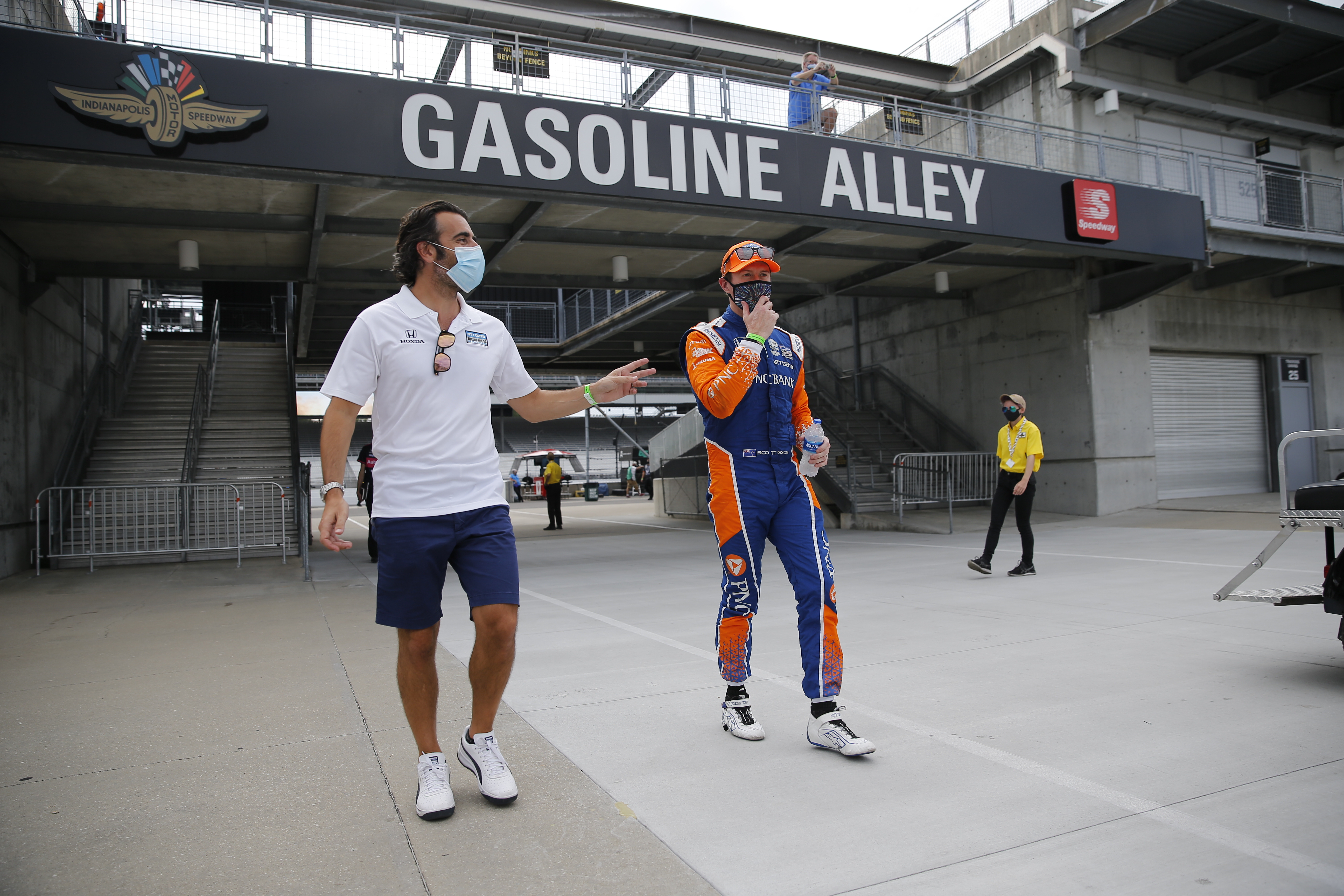
“I think he’s a huge part of our team. He gives a lot of great advice to me.”
Whatever happens, IndyCar has been blessed to welcome Dixon and Franchitti from foreign lands, as two of the best that will ever compete in its series.

